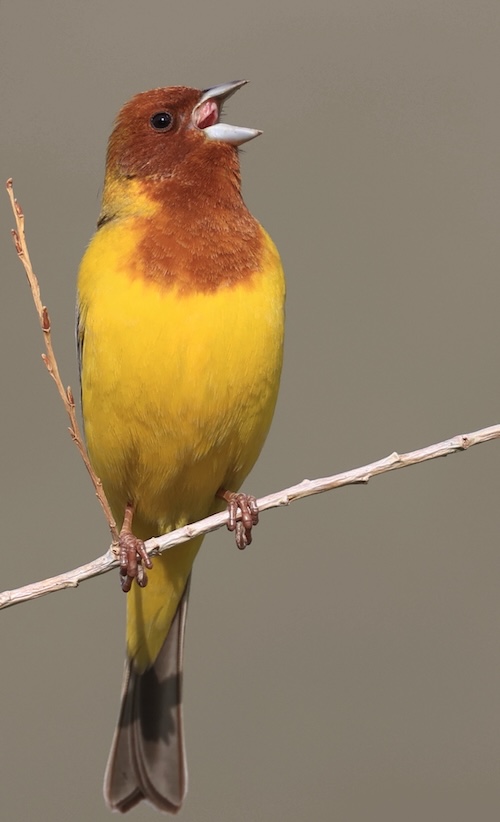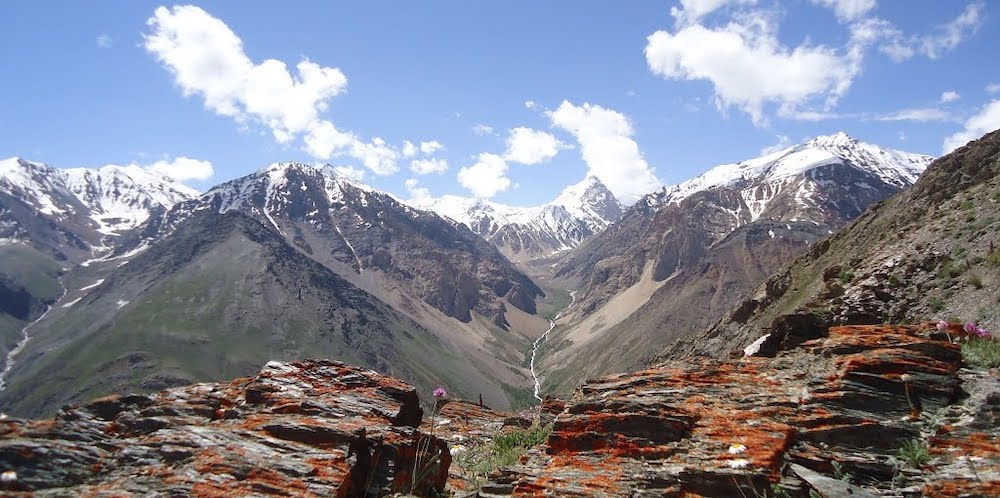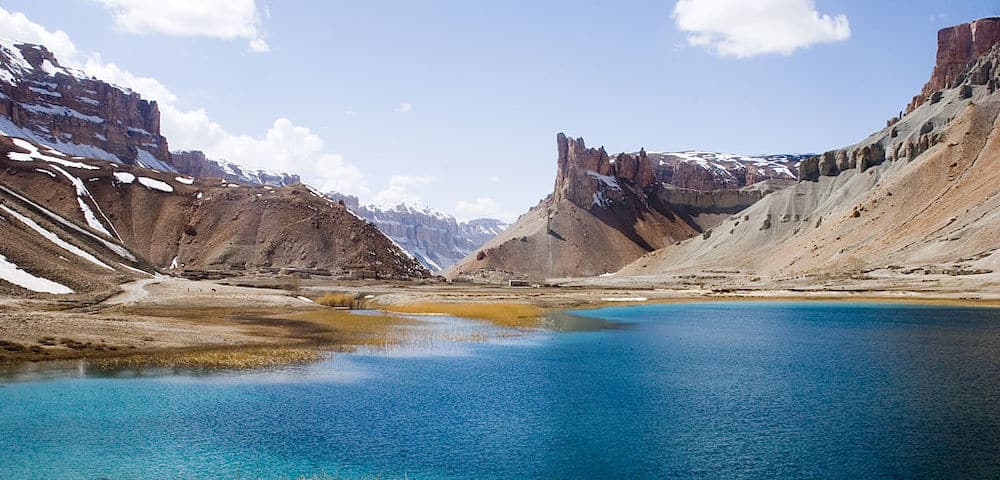Islamic Republic of Afghanistan

Afghanistan is a landlocked country located at the crossroads of Central Asia and South Asia. Referred to as the Heart of Asia, it is bordered by Pakistan to the east and south, Iran to the west, Turkmenistan to the northwest, Uzbekistan to the north, Tajikistan to the northeast, and China to the northeast and east. Occupying over 650,000 km2 (c.250,000 square miles) of land, the country is predominantly mountainous with plains in the north and the southwest, which are separated by the Hindu Kush mountain range. Kabul is the capital and the country’s largest city with about 4.75 million inhabitants. It has a population of about 43 million people, although as many as five million are still refugees in neighbouring countries.
Afghanistan has seen civil war off and on for almost fifty years with various outside powers intervening. The Taliban regime which took power again in 2021 has somewhat stabilised the country and reduced corruption but human rights are few and poverty and hunger effects half the population.

Wakhan National Park – ©Khwahan, CC BY-SA 3.0 via Wikimedia Commons
The geography in Afghanistan is varied, but is mostly mountainous and rugged, with some unusual mountain ridges accompanied by plateaus and river basins. It is dominated by the Hindu Kush range, the western extension of the Himalayas that stretches to eastern Tibet via the Pamir Mountains and Karakoram Mountains in Afghanistan’s far north-east. Most of the highest points are in the east consisting of fertile mountain valleys, often considered part of the ‘Roof of the World’. The Hindu Kush ends at the west-central highlands, creating plains in the north and southwest, namely the Turkestan Plains and the Sistan Basin; these two regions consist of rolling grasslands and semi-deserts, and hot windy deserts, respectively. Forests exist in the corridor between Nuristan and Paktika provinces and tundra in the northeast. The country’s highest point is Noshaq, at 24,580 feet above sea level. The lowest point lies in Jowzjan Province along the Amu River bank, at 846 feet.

Nuristan Province Stream – ©Tech. Sgt. Brian Christiansen domain, via Wikimedia Commons
Despite having numerous rivers and reservoirs, large parts of the country are dry. The endorheic Sistan Basin is one of the driest regions in the world. The Amu Darya rises at the north of the Hindu Kush, while the nearby Hari Rud flows west towards Herat, and the Arghandab River from the central region southwards. To the south and west of the Hindu Kush flow a number of streams that are tributaries of the Indus River, such as the Helmand River. The Kabul River flows in an easterly direction to the Indus ending at the Indian Ocean. Afghanistan receives heavy snow during the winter in the Hindu Kush and Pamir Mountains, and the melting snow in the spring season enters the rivers, lakes, and streams. However, two-thirds of the country’s water flows into the neighbouring countries of Iran, Pakistan, and Turkmenistan. The state needs more than US$2 billion to rehabilitate its irrigation systems so that the water is properly managed.
Afghanistan has a continental climate with harsh winters in the central highlands, the glaciated northeast (around Nuristan), and the Wakhan Corridor, where the average temperature in January is below −15 °C and can reach −26 °C and hot summers in the low-lying areas of the Sistan Basin of the southwest, the Jalalabad basin in the east, and the Turkestan plains along the Amu River in the north, where temperatures average over 35 °C in July and can go over 43 °C. The country is generally arid in the summers, with most rainfall falling between December and April. The lower areas of northern and western Afghanistan are the driest, with precipitation more common in the east. Although proximate to India, Afghanistan is mostly outside the monsoon zone, except the Nuristan Province which occasionally receives summer monsoon rain.
Birding Afghanistan
Several types of mammals exist throughout Afghanistan. Snow leopards, Siberian tigers and brown bears live in the high elevation alpine tundra regions. The Marco Polo sheep exclusively live in the Wakhan Corridor region of north-east Afghanistan. Foxes, wolves, otters, deer, wild sheep, lynx and other big cats populate the mountain forest region of the east. In the semi-desert northern plains, wildlife include a variety of birds, hedgehogs, gophers, and large carnivores such as jackals and hyenas. Gazelles, wild pigs and jackals populate the steppe plains of the south and west, while mongoose and cheetahs exist in the semi-desert south. Marmots and ibex also live in the high mountains of Afghanistan, and pheasants exist in some parts of the country.

Band-e Amir National Park – ©Afghanistan Matters CC BY 2.0 via Wikimedia Commons
Endemic fauna of Afghanistan includes the Afghan flying squirrel, Afghan Snowfinch, and Paghman Mountain Salamander among others. Endemic flora include Iris afghanica. Afghanistan has a wide variety of birds despite its relatively arid climate – over 500 species of which at least 235 breed.
Several regions are designated protected areas; there are three national parks: Band-e Amir, Wakhan and Nuristan.
-
Wikipedia
GNU Free Documentation License
https://en.wikipedia.org/wiki/Afghanistan
-
Number of bird species: 502
(As at August 2024)National Bird - Golden Eagle Aquila chrysaetos
Number of endemics: 1
Afghan Snowfinch Pyrgilauda theresae
-
Avibase
PDF ChecklistThis checklist includes all bird species found in Afghanistan , based on the best information available at this time. It is based on a wide variety of sources that I collated over many years. I am pleased to offer these checklists as a service to birdwatchers. If you find any error, please do not hesitate to report them. -
Wikipedia
Annotated ListThis is a list of the bird species recorded in Afghanistan. The avifauna of Afghanistan include a total of 502 species, of which 4 have been introduced by humans. Of the species in Afghanistan, 46 species are globally threatened. -
eBird
PDF ChecklistThis checklist is generated with data from eBird (ebird.org), a global database of bird sightings from birders like you. If you enjoy this checklist, please consider contributing your sightings to eBird. It is 100% free to take part, and your observations will help support birders, researchers, and conservationists worldwide.
-
Birds of Central Asia
| (Kazakhstan, Turkmenistan, Uzbekistan, Kyrgyzstan, Tajikistan & Afghanistan) | By Raffael Ayé, Manuel Schweizer & Tobias Roth | Christopher Helm | 2012 | Paperback | 336 pages, 141 plates with colour illustrations; 14 colour photos, 5 b/w illustrations, 3 colour maps, colour distribution maps | ISBN: 9780713670387 Buy this book from NHBS.com -
Reptiles and Amphibians of Afghanistan
| (A Field Guide for the FOB) | By John M Regan | John M Regan | 2016 | Paperback | 66 pages, colour photos | ISBN: 9780692859612 Buy this book from NHBS.com
-
Kabul Birds Club
Facebook Page -
OSME
Webpage
-
*List of protected areas of Afghanistan
InformationSatellite ViewNational Parks, Nature reserves and wildlife sanctuaries -
NP Band-e Amir National Park
InformationSatellite ViewAfghanistan's first national park to promote and protect the natural beauty of a series of intensely blue lakes created by natural dams high in the Hindu Kush. A 41,000 ha (100,000 acres) tract overlapping the national park has been designated an Important Bird Area (IBA) by BirdLife International because it supports populations of Himalayan snowcocks, Hume's larks, white-winged snowfinches, Afghan snowfinches and Eurasian crimson-winged finches. -
NP Wakhan National Park
InformationSatellite ViewFlora and fauna in the Wakhan National Park include some 600 plant species, the snow leopard, lynx, wolf, brown bear, stone marten, red fox, Pallas's cat, ibex, Marco Polo sheep, and urial. -
NR Ajar Valley Nature Reserve
InformationSatellite ViewAjar Valley Nature Reserve is a protected area in Afghanistan, located in Bamyan Province. It was designated a nature reserve in the early 20th century after the Afghan royal family had used the area for hunting. -
NR Ab-i Istada
InformationSatellite ViewThe wetlands around Ab-i Istada attract a variety of migratory birds, over 120 species having previously been recorded. Up to 9,000 flamingos... -
WS Hashmat Khan Park
InformationSatellite ViewQala-e Hashmat Khan, is a waterfowl sanctuary and protected area located in Kabul
-
eBird
SightingseBirding This Month
-
BirdQuest
Tour OperatorAFGHANISTAN EXPEDITION – Afghan Snowfinch and Large-billed Reed Warbler
-
2011 Birding with a helmet on - Jon Rouse:
PDF ReportDuring my 2009 four month tour I had seen 47 species of birds including some of my favorites such as Long Tailed Shrike, Hoopoe, and several different raptors including the Short Toed Snake Eagle... -
2024 [01 January] - Kai Pflug
Report...Inside the Band-e-Amir National Park, I added a horrible shot of a Horned Lark to my bird photo collection...

